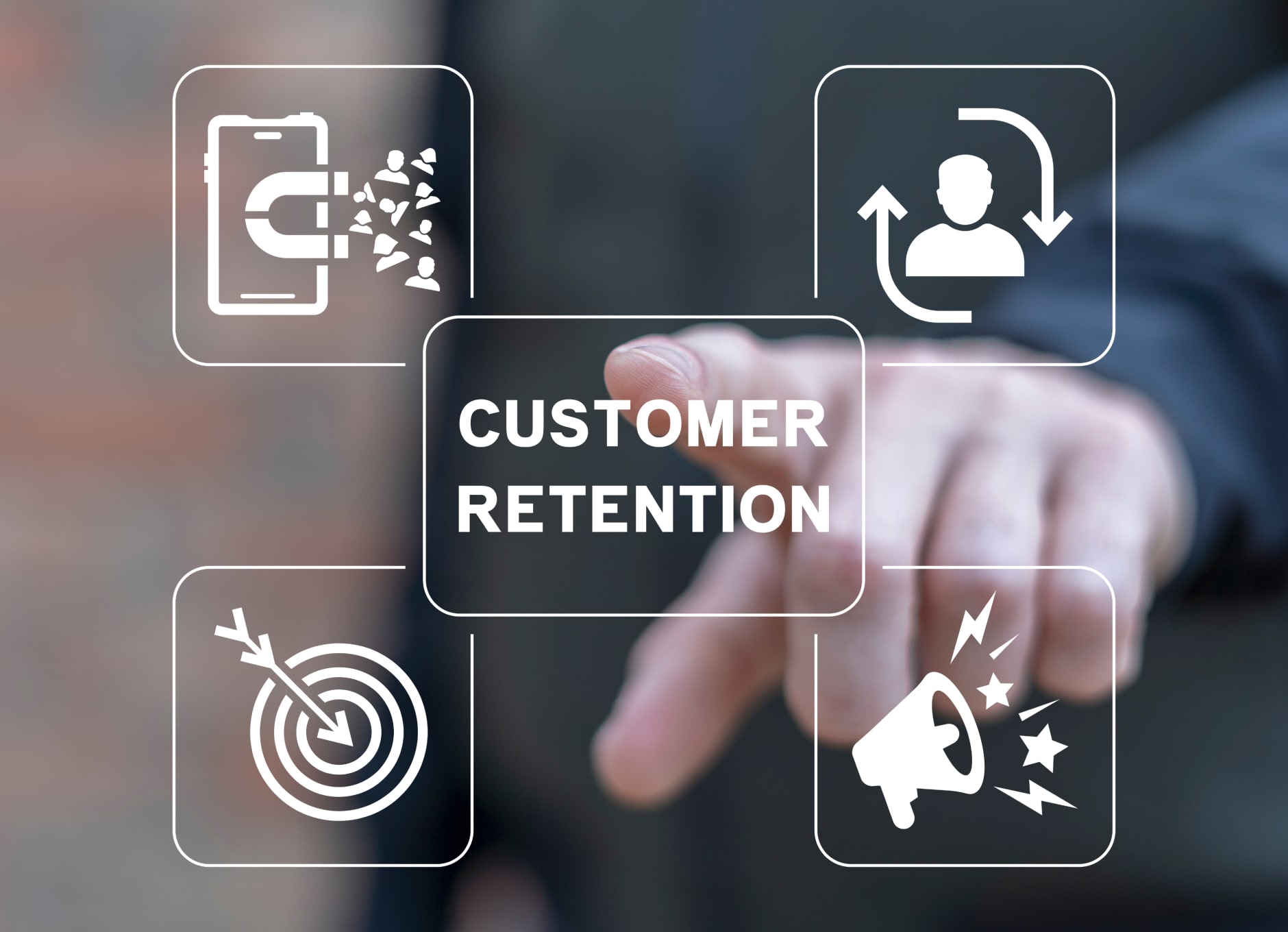Customer Retention: How Merchants Can
Reduce Customer Churn With CRM Systems
Can a CRM improve customer retention and make your business thrive?
Find out in this article.
Imagine your business as a garden. You've painstakingly cultivated vibrant relationships with your customers, each one a blossoming flower. But what if those flowers, instead of thriving, began to wither and drop away? This is the reality of customer churn, a silent drain on revenue that can stifle even the most promising businesses. For merchants navigating the complexities of modern commerce, the question isn't just how to attract customers but how to keep them. Enter the CRM system, a powerful tool that can transform your customer relationships from fleeting encounters to enduring partnerships and, ultimately, fortify your garden against the winds of churn.

Customer Churn and Retention Rates Explained
Customer churn rate is the percentage of customers a business loses within a given time, while customer retention rate is the percentage it keeps. High churn indicates dissatisfaction like a streaming service losing subscribers due to poor content or a phone company losing customers to better deals. High retention shows loyalty, such as a coffee shop maintaining regulars with consistent quality or an online store keeping customers through personalized recommendations and excellent service. Essentially, churn is customers leaving (e.g., canceling a subscription), and retention is customers staying (e.g., renewing a contract).
How CRM Can Minimize Customer Churn Rates
Instead of viewing a CRM as a mere database, envision it as a dynamic, predictive ecosystem that anticipates and responds to subtle shifts in customer sentiment. Modern CRM systems transcend simple data storage, becoming a strategic tool for preempting customer departures. Here's how this unique lens alters our understanding.
-
Orchestrating customer weather forecasting.
Rather than just recording past interactions, a CRM can analyze real-time customer behavior, like sudden drops in app usage or spikes in specific support inquiries, to create customer weather forecasts. This allows businesses to anticipate potential "storms" of dissatisfaction before they lead to customer exodus. However, note that this is not just data analysis — it is the ability to predict future customer behavior. -
Crafting personalized resonance fields.
Moving beyond generic segmentation, a CRM can facilitate the creation of personalized resonance fields, where every customer interaction is tuned to their unique emotional and behavioral frequencies. This means delivering content and offers that truly resonate, fostering a sense of deep connection. -
Building supportive symbiotic networks.
Instead of reactive customer service, a CRM enables the construction of supportive symbiotic networks, where businesses proactively assist customers, anticipating their needs and providing solutions before problems arise. This creates a sense of partnership, not just service provision. -
Establishing quality constellation monitoring.
Rather than just tracking product defects, a CRM can be used to establish quality constellation monitoring, where every customer interaction is analyzed for subtle indicators of quality satisfaction. This allows businesses to identify and address systemic issues before they lead to widespread churn. -
Developing feedback alchemy.
A CRM can be used to perform so-called "feedback alchemy," transforming raw customer opinions into actionable insights that drive continuous improvement. This means not just listening but actively transforming feedback into tangible enhancements. -
Automating relationship nurturing sequences.
Instead of basic automated messages, a CRM facilitates the creation of relationship-nurturing sequences, where personalized communication is delivered at key moments in the customer journey, fostering ongoing engagement and loyalty. -
Creating intelligent interaction records.
Going beyond basic record keeping, a CRM can create intelligent interaction records that track the emotional context of customer interactions, allowing customer service to pick up on subtle cues and increase customer satisfaction.
In essence, a modern CRM is not just a tool but a strategic asset that allows a business to build a living, breathing relationship with each customer. By focusing on anticipation, personalization, and proactive support, businesses can transform their CRM into a powerful engine for customer retention.
Tactics to Retain Customers
To truly anchor customers within your ecosystem, moving beyond transactional exchanges, consider these unique retention approaches:
-
Hyper-personalized journeys.
Craft bespoke experiences that anticipate individual needs, using data to map unique customer pathways, not just generic segments. -
Inner circle privileges.
Establish tiered access to exclusive resources, insights, or experiences, making loyal customers feel like valued insiders beyond simple points. -
Anticipatory support networks.
Develop systems that predict potential customer roadblocks and preemptively offer solutions, creating a sense of being understood and cared for. -
Unwavering craftsmanship.
Cultivate a culture of meticulous quality, where every product or service reflects a dedication to excellence, fostering unwavering trust. -
Collaborative innovation.
Create platforms for customers to directly influence product development, turning them into partners in shaping the future of your offerings.

-
Behind the curtain access.
Offer exclusive glimpses into the creative process, company culture, or future plans, fostering a sense of transparency and shared ownership. -
Tribal gatherings.
Organize events or online spaces that facilitate meaningful connections between like-minded customers, creating a sense of belonging. -
Unexpected acts of gratitude.
Implement surprise gestures that go beyond typical rewards, creating memorable moments of appreciation. -
Frictionless engagement ecosystems.
Design a seamless, intuitive experience across all touchpoints, eliminating obstacles and maximizing convenience. -
Knowledge enrichment hubs.
Develop resources that empower customers with valuable insights and skills related to your offerings, establishing your brand as a trusted authority.
These strategies aim to create a deeper, more meaningful connection with customers, transforming them from mere consumers into passionate advocates. By focusing on creating unique experiences and fostering genuine relationships, businesses can build a loyal customer base that stands the test of time.
Wrapping Up
In the dynamic landscape of modern commerce, customer retention is no longer a luxury but a necessity. By harnessing the power of a CRM system like Germius, merchants can transform fleeting transactions into enduring partnerships. This isn't just about collecting data; it's about cultivating a deep understanding of each customer, anticipating their needs, and fostering genuine loyalty. Embracing a CRM is an investment in the longevity and prosperity of your business, ensuring that your customer relationships flourish and your business thrives in an ever-evolving marketplace.


